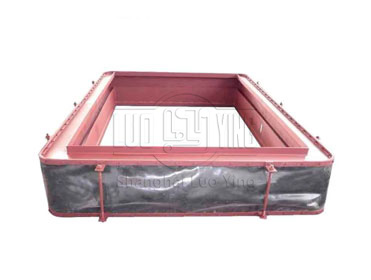About the performance analysis of non-metallic expansion joints
Apr-23-24
About the performance analysis of non-metallic expansion joints1 . Thermal insulation and energy-saving performance: the structure of the non-metallic expansion joint itself has thermal insulation performance. While the metal non-metallic expansion joint does not have this condition, in order to heat preservation, the outer layer of the metal non-metallic expansion joint, but also covered with a layer of insulation.
2 . Compensation function: Under the same size conditions, the compensation function of non-metallic non-metallic expansion joints is much greater than that of metal non-metallic expansion joints. Especially for the compensation function of lateral displacement, the compensation function of non-metallic non-metallic expansion joint is almost an order of magnitude larger than that of metallic non-metallic expansion joint.
3 . High temperature, not easy to corrode: non-metallic non-metallic expansion joint material not only has a good ability to withstand high temperature performance, but also, it has performance. Ordinary carbon structural steel in the environment of 600 ℃ its yield limit is equal to zero, the temperature is higher will be oxidation and skin. Carbon steel non-metallic expansion joints are prone to cracking in the course of work, stainless steel non-metallic expansion joints in low temperature environment, low leakage point corrosion will occur, and its cost is also quite substantial.
4 . Service life: the service life of non-metallic expansion joints and environmental conditions are closely related. Non-metallic non-metallic expansion joints corrosion performance than good, relatively speaking, the same conditions non-metallic non-metallic expansion joints life will be longer than the life of metal non-metallic expansion joints.
5 . Use of media: metal non-metallic expansion joints are suitable for liquids, gases, powders. Non-metallic non-metallic expansion joints can be both gases and liquids.
6 . Compensation resistance: non-metallic expansion joints are like an elastomer, which will generate resistance after being shrunk or stretched, and the resistance of metal non-metallic expansion joints is much larger than that of non-metallic ones. This resistance is too large for the system is not good, will be the surrounding equipment top bad.
7 . Pressure: Thanks to the flexible design and the special materials used, non-metallic expansion joints can withstand higher working pressure.
8 . Maintenance and replacement performance: non-metallic non-metallic expansion joints do not require maintenance during their normal service life cycle; non-metallic non-metallic expansion joints are much easier to replace than metallic non-metallic expansion joints.


